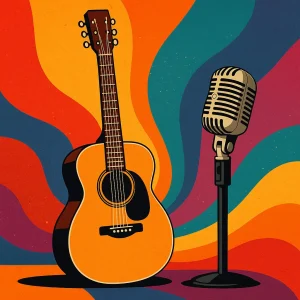What Is Pop Music? Defining the World’s Most Popular Genre
Pop music, short for “popular music,” is the world’s most consumed and widely recognized genre. Known for its infectious melodies, relatable lyrics, and mainstream accessibility, pop transcends borders, ages, and cultures. Unlike genres with rigid stylistic rules, pop is shaped by what’s trending. It draws influence from rock, dance, hip-hop, R&B, electronic music, and even world music. Its ability to evolve while staying emotionally resonant is what makes pop more than just a sound. It’s a reflection of modern society’s heartbeat.
The Birth of Pop Music in the 1950s and 1960s
Pop music traces its commercial roots to the 1950s, when artists like Elvis Presley, Buddy Holly, and The Everly Brothers brought together rhythm and blues, gospel, and country influences. These early songs emphasized melody, emotional clarity, and universal appeal. The 1960s brought an even greater transformation, with the emergence of The Beatles, The Beach Boys, and The Supremes, whose harmony-driven, radio-friendly songs set the standard for pop perfection. These decades laid the groundwork for what would become the global pop phenomenon.
The British Invasion and Pop’s Global Breakthrough
The British Invasion of the 1960s—led by The Beatles, The Rolling Stones, and The Kinks—revolutionized the global pop landscape. These artists combined American rock and blues with European flair and lyrical introspection, captivating audiences on both sides of the Atlantic. This cultural exchange elevated pop from regional popularity to international stardom, igniting a global appetite for new voices, new sounds, and groundbreaking songwriting. It was the moment when pop truly became a worldwide force.
Pop Music in the 1970s and 1980s: Innovation and Iconic Artists
In the 1970s, pop music expanded to include influences from funk, soul, and disco, creating a more rhythm-driven and groove-heavy sound. Artists like ABBA, Stevie Wonder, Fleetwood Mac, and Elton John mastered the formula of hit-making, while also pushing creative boundaries. The 1980s took pop into the visual age, with the rise of MTV bringing unforgettable music videos to millions of homes. Michael Jackson, Madonna, and Prince became global icons. They combined visual artistry, bold fashion, and innovative production to create a new standard for pop superstardom.
How MTV and Music Videos Changed the Pop Landscape
Launched in 1981, MTV transformed how people consumed music. For pop artists, visual storytelling became as important as the music itself. Pop songs were now paired with compelling visuals, dance choreography, and dramatic narratives, boosting both exposure and sales. This new platform helped artists like Cyndi Lauper, Duran Duran, and Whitney Houston dominate the charts while setting trends in fashion and pop culture. Music videos became essential tools in building a pop star’s image and cultural relevance.
The Rise of Digital Pop: From the 1990s to the Streaming Era
In the 1990s, pop music embraced slick production, genre-blending, and a surge of new idols. Mariah Carey, Britney Spears, Backstreet Boys, and NSYNC ruled the airwaves with radio-friendly anthems and dance-ready beats. The rise of hip-hop, R&B, and electronic dance music (EDM) began to influence pop’s direction.
As the 2000s rolled in, digital technology revolutionized music consumption. With platforms like iTunes, YouTube, and Spotify, artists such as Lady Gaga, Beyoncé, Rihanna, and Justin Bieber built massive fanbases online. Today’s pop charts reflect global diversity, featuring stars like Bad Bunny, Dua Lipa, and BTS, whose reach spans continents and cultures.
Modern Pop Music: Global Sounds, Diverse Voices
Pop music today is a global tapestry. It borrows sounds from Latin pop, Afrobeats, K-pop, EDM, and indie, creating a hybrid genre that appeals to fans around the world. Collaborations between artists across countries and genres are now common, reflecting a more interconnected and inclusive music industry. From stadium tours to TikTok trends, modern pop is driven by viral moments, genre fusion, and an ever-evolving digital presence.
The Future of Pop: Trends Shaping Tomorrow’s Hits
The future of pop lies in its adaptability. With AI music generation, VR concerts, and short-form video platforms like TikTok redefining discovery and promotion, pop will continue to evolve with technology. Sustainability, social awareness, and fan-driven content are becoming part of the pop narrative, suggesting the genre will not only entertain but also reflect global consciousness in new ways.
Why Pop Music Endures: Cultural Impact and Emotional Connection
More than just chart-toppers and catchy hooks, pop music endures because of its emotional accessibility and cultural significance. It reflects the spirit of the times—our joys, struggles, trends, and transformations. From teenage heartbreaks to global anthems, pop connects us through stories that feel familiar, even if sung in different languages. It’s a genre that listens to its audience and evolves with them.
